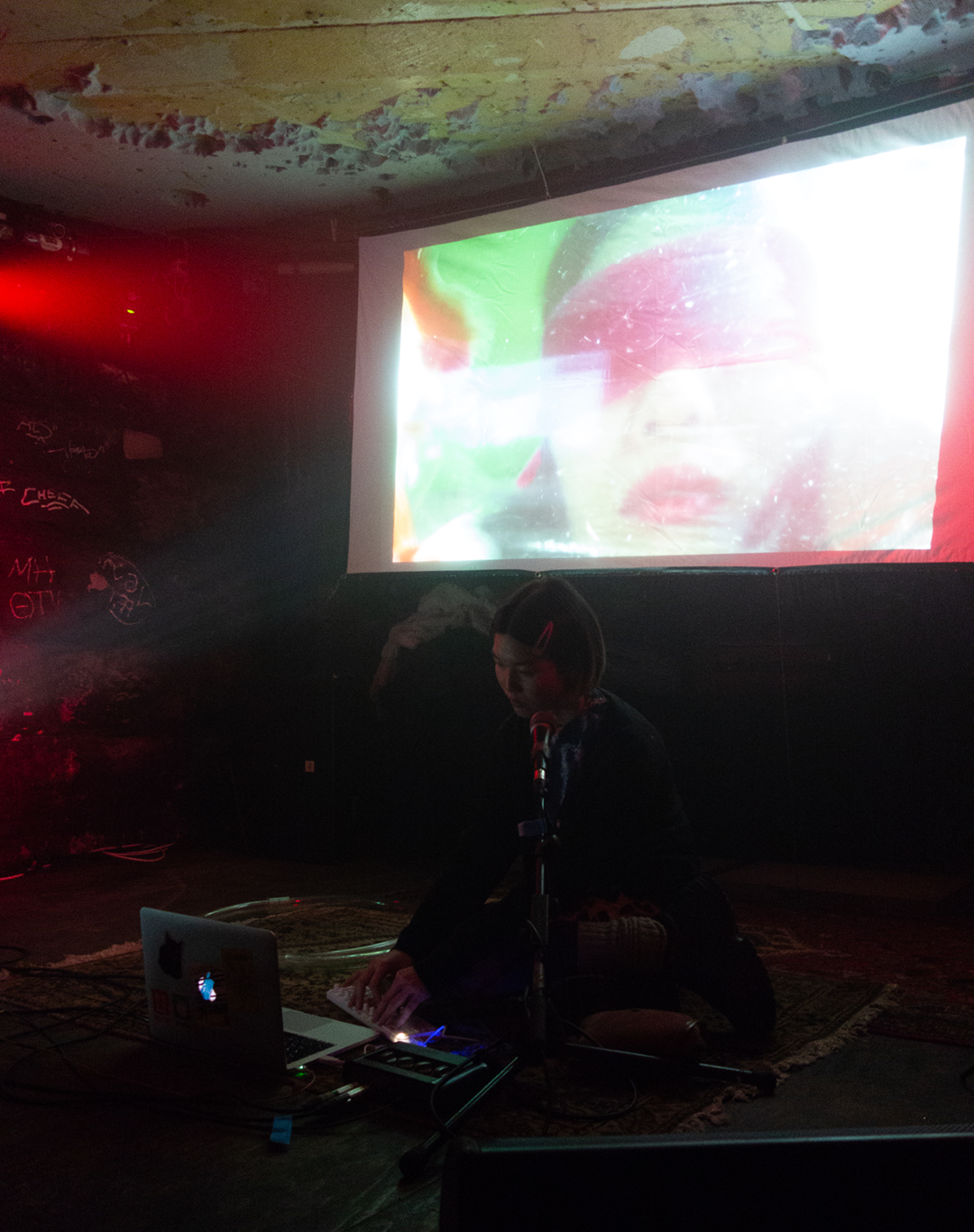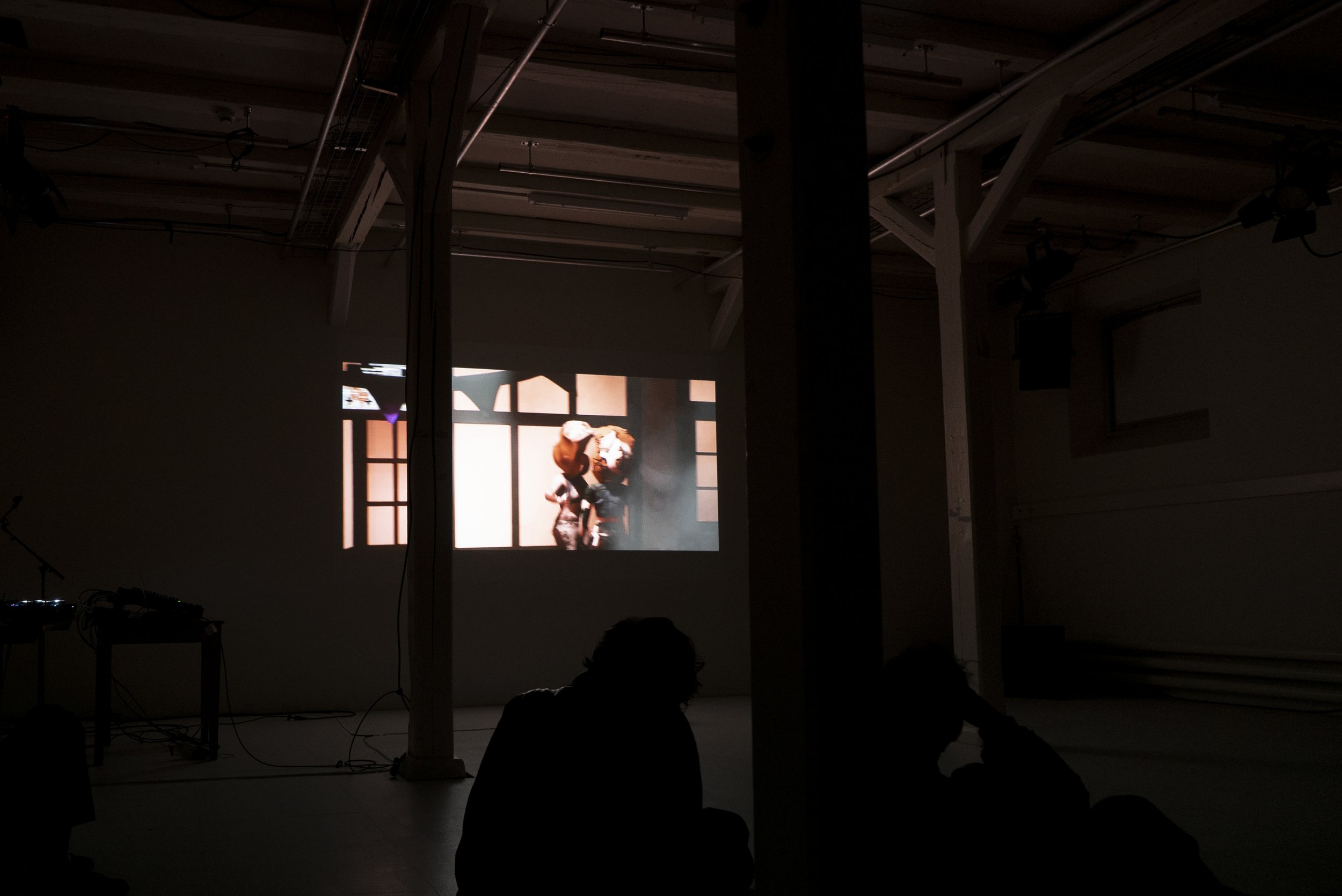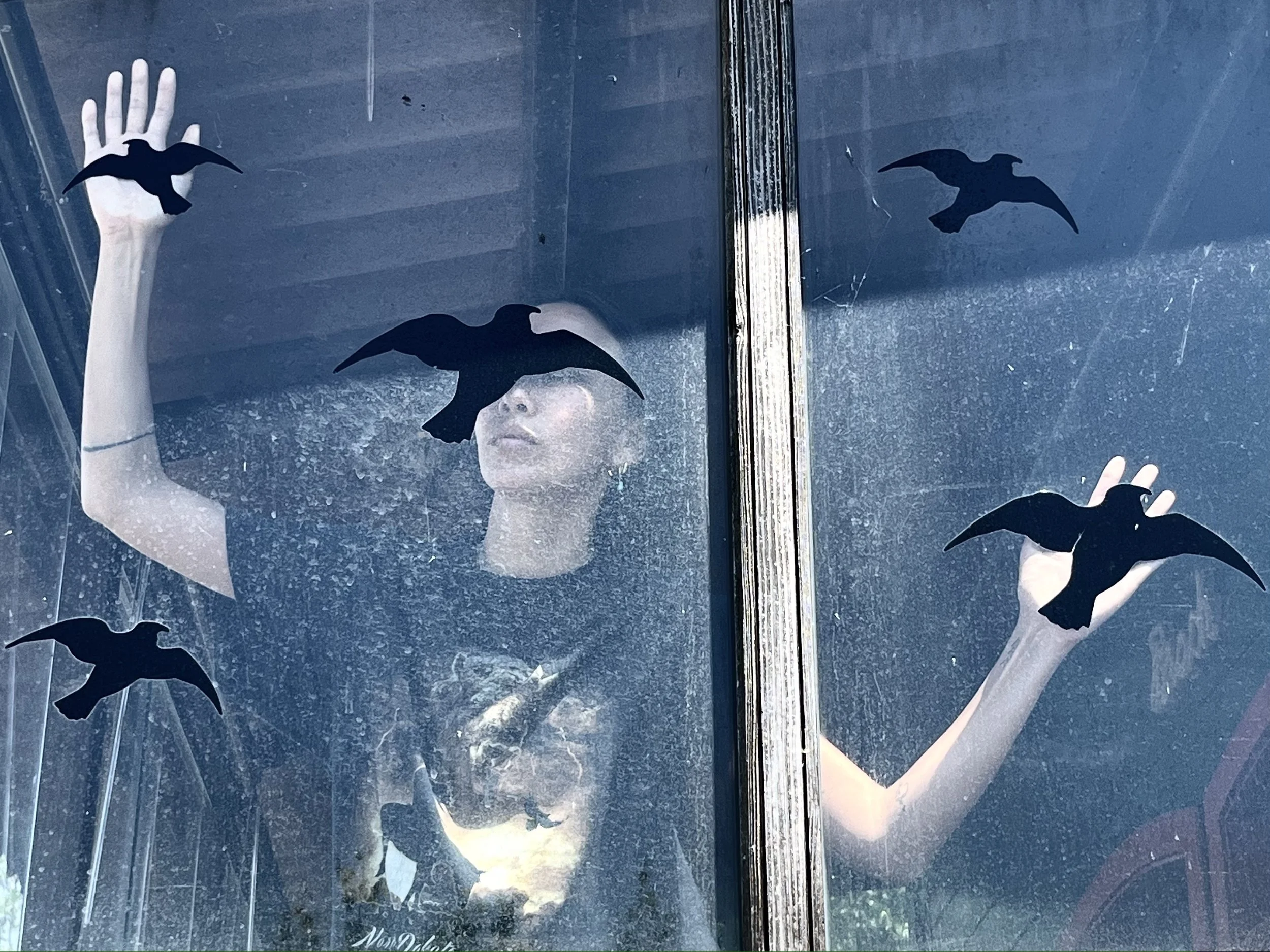"An LP always seems like an important statement, the next step, blah blah... It's not. This is just something we've been casually doing this year in our studio." — Robin Guthrie
If there's one lesson anybody will learn from listening to Cocteau Twins, it's that one can never know what to expect next. This lesson becomes rather evident with the companion EPs Tiny Dynamine and Echoes in a Shallow Bay. Just as the listener feels they have figured it all out, the Cocteau Twins come along and take you completely by surprise.
Tiny Dynamine and Echoes in a Shallow Bay — impossible to discuss separately — marks the beginning of another phase in their music history, one which clears more territory in the abstract reaches of the metaphysical, textural, and impressionistic elements to which they unassumingly, unwittingly, and perhaps unintentionally lay claim. Everything is starting to float around and separate — space out — and slow down somewhat. The production quality is highly polished and full-bodied and is clearly the best production the band had done up to that point. The arrangements are well organized and exhibit rather mature songwriting.
Naturally, however, the Cocteaus — at least Robin — had a slightly different approach to the situation: "This is pure flop material we're releasing [laugh]. People think we're being awkward, but it's the only way we could possibly put these songs out. An LP always seems like an important statement, the next step, blah blah... It's not. This is just something we've been casually doing this year in our studio."
"It wasn't even meant to be a record to start off with. It's almost experimental, but that's the wrong word. We recorded it at our studio just to see if the place was good enough to make records. It is. We were halfway through it when we realized that it was alright, so we decided to pursue it further, do something with it."
"It's the best sounding record we've ever made, technically and everything. If you play it, it sounds good. We're learning to make records that sound better when you put them on. It sounds better than any Trevor Horn production [laughs again]. These records make me happy." [Jamming Magazine, 1985].
Listening to these two records can be like swimming inside a lava lamp or looking skywards from the bottom of a pool. The momentum is strikingly different when compared with previous material, except perhaps for "Quisquose," from Aikea-Guinea, which shows much similarity with the work on Tiny Dynamine and Echoes in a Shallow Bay. The timing signatures are complex and the tempo is often erratic and difficult to grasp. Liz's vocal instrument is increasingly acrobatic and dynamic, indicating a true gift for vocal arrangement and composition (I cite "Great Spangled Fritillary" as a prime example). The overall underlying theme may simply be that this isn't to be grasped — but instead to be imprinted upon the imagination and absorbed into the unconscious.
The song titles certainly inspire visual images and textures: "Pink Orange Red," "Ribbed and Veined," "Pale Clouded White," "Eggs and Their Shells," "Plain Tiger," etc. It is generally accepted that the two bodies of work were largely inspired by nature—particularly butterflies. Both "Great Spangled Fritillary," "Plain Tiger," and "Pale Clouded White" are common names of butterfly species; the "lyrics" to "Melonella" (itself a word for "swarm") are the Latin names for various butterfly species; and other titles, such as "Pink Orange Red" and "Ribbed and Veined" further contribute to such a perception. The title "Sultitan Itan," incidentally, is a borrowed lyric from "Pink Orange Red," in keeping with Liz's practice of reusing words and phrases throughout the work.
The rather perversely titled "Ribbed and Veined" is a complex instrumental piece, and a testament to the band's ability to write solid compositions—although, according to Simon, it happens unwittingly:
"I don't really think of us as songwriters. In the traditional sense, they're not songs at all. Songwriters, to me, mean people who sit down with an acoustic guitar and piano, methodically working out the right chords, what words go with these chords, fitting it all in. We don't work like that. It's usually, turn the tape recorder on and hopefully, in ten minutes, we have something. Then Liz will come down, listen and sing. It's not like songwriting, it's music." [Jamming Magazine, December, 1985]
"Great Spangled Fritillary" is like witnessing an elaborate Tibetan ritual, replete with gongs; and "Sultitan Itan" and "Melonella" are excursions into jazz, with "Melonella"'s odd-sounding Latin lyrics—something only the Cocteaus could express so well—while "Eggs and Their Shells" makes use of sparse echoed piano and astral guitar.
The most addictive track of the eight featured here is clearly "Pink Orange Red," for which the band recorded a live television video. This song has also been regularly performed live since 1985, and is one of the band's most popular live selections. "Plain Tiger" and "Pale Clouded White" also appeared in live performances in 1985 and 1986.
A more subdued "Pink Orange Red" was recorded in 1995 for the mostly-acoustic EP Twinlights. When asked why they chose that particular tune to rearrange acoustically, they stated simply that it was one of the few that "worked."
"Pink Orange Red" and "Pale Clouded White" were also selected to appear on the 2000 4AD retrospective compilation, Stars and Topsoil.
Tiny Dynamine and Echoes in a Shallow Bay were re-released as a double-EP in CD format in late 1985. Both were clearly overtures, at least in the abstract sense, to Victorialand and The Moon and The Melodies, which both appeared the following year and further and more fully explored this aspect of Cocteau Twins' music.







































